Cycling is a passion for many, and part of the thrill comes from customizing and upgrading your bicycle. One such upgrade that can significantly improve your cycling experience is installing quick release carbon wheels. These wheels are not only lightweight and durable but also allow for easy installation and removal.
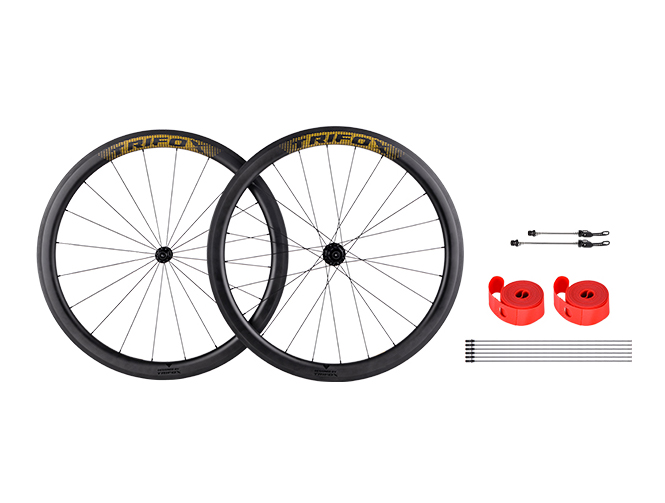
Understanding Quick Release Carbon Wheels
Quick release carbon wheels are a popular choice among cyclists due to their excellent balance of weight, strength, and aerodynamics. They come with a quick-release mechanism that makes it easy to install and remove the wheels without any tools. Trifox offers a range of high-quality quick release carbon wheels, including the Rim Brake Clincher Carbon Wheelset WT17 and the V-Brake Clincher Carbon Wheelset WT18.
Step 1: Prepare Your Bicycle
Start by preparing your bike. Position it so it's stable and won't tip over during the wheel installation process. If you have a bike stand, this would be the best time to use it.
Step 2: Remove the Old Wheels
To remove the old wheels, open the quick release lever on the wheel hub and unscrew the end nut if necessary. Once loosened, the wheel should slide out easily from the dropouts (slots in the frame and fork where the wheel axles go).
Step 3: Insert the New Wheel
Take your new quick release carbon wheel and slide the axle into the dropouts. Make sure the wheel is centered in the frame or fork.
Step 4: Secure the Quick Release
Once the wheel is in place, close the quick release lever to secure the wheel. The lever should be firm but not overly tight. If necessary, adjust the tension using the nut on the opposite side of the lever.
Step 5: Check the Installation
After installing the wheel, give it a spin to make sure it's turning freely. Also, check that it's securely held by the quick release and isn't wobbly or misaligned.
Conclusion
Installing quick release carbon wheels on your bicycle is a straightforward task that can greatly enhance your riding experience. It not only improves your bike's performance but also makes wheel removal for transportation or tire changes a breeze. As always, ensure you're familiar with your bike's specifications and the product details before starting the installation.
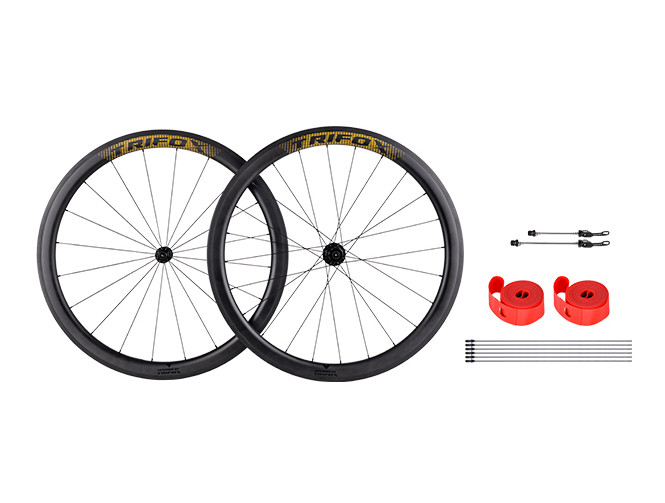
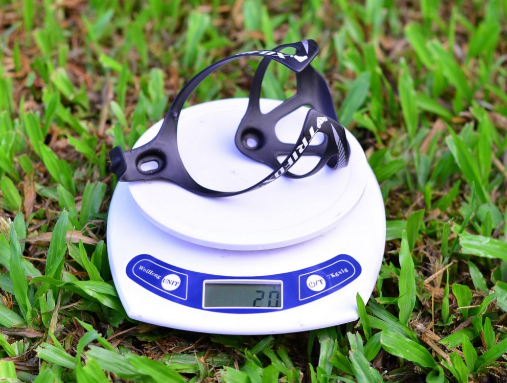
Cycling is not just about the ride; it's about the journey. And no journey is complete without proper hydration. This is where a bottle cage adapter comes into play. It allows cyclists to conveniently carry their water bottles on their bikes. In this blog post, we'll guide you through the process of installing a bottle cage adapter on your bike.
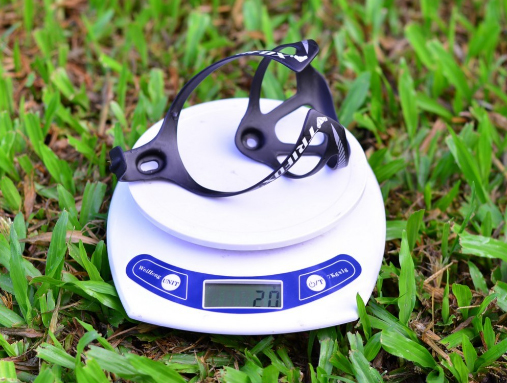
A bottle cage adapter is a simple but essential accessory for any cyclist. It provides a mounting point for a water bottle cage on your bike, allowing you to keep a water bottle within easy reach during your rides. For those who are not familiar, Trifox offers an excellent range of bike water bottle cages that are durable, lightweight and designed to securely hold your water bottle.
Step 1: Gather Your Tools
Before you begin, make sure you have the necessary tools. You will need a bottle cage adapter, a water bottle cage, screws (usually included with the cage), and a screwdriver or Allen key.
Step 2: Determine the Mounting Location
Decide where on your bike you want to mount the water bottle cage. The location will depend on your bike's frame design and your personal preference. Common locations include the down tube (the part of the frame that slopes downward from the handlebars towards the pedals) and the seat tube (the vertical part of the frame that holds the seat post).
Step 3: Attach the Adapter
Now, it's time to attach the bottle cage adapter to your bike. Position the adapter onto the desired spot on your bike frame and secure it in place using the provided screws and your screwdriver or Allen key. Make sure the adapter is tightly secured to the frame, but be careful not to over-tighten the screws as this could damage your bike frame.
Step 4: Mount the Cage
Once the adapter is securely in place, you can attach the water bottle cage to it. Align the screw holes on the cage with those on the adapter and secure the cage using the remaining screws. Again, ensure the cage is firmly attached but be mindful not to over-tighten the screws.
Step 5: Test the Setup
Now that your water bottle cage is installed, put a water bottle in it and test the setup. The bottle should fit snugly in the cage and be easy to remove and replace while you're riding.
Conclusion
Installing a bottle cage adapter on your bike is a simple task that offers significant benefits. It allows you to stay hydrated on your rides, improving your comfort and performance. Remember, the goal is to make your cycling journey as enjoyable and comfortable as possible, and staying hydrated is an integral part of that. Happy cycling!

When it comes to cycling, the devil is in the details. Every component of your bike plays a critical role in its performance, and hubs are no exception. Hubs are the central part of your wheels, and choosing the right one can significantly enhance your cycling experience.
Understanding Bike Hubs
Bike hubs are the core of your wheels where the axle and bearings are located. They connect the wheel with the bike frame and allow the wheel to spin freely. The number of holes in a hub (like the 32H in Trifox Bike Hub M827) refers to the number of spokes a wheel has. Generally, more spokes mean a stronger but slightly heavier wheel, making a 32H hub a balanced choice for many riders.
Factors to Consider when Choosing a Bike Hub
1. Riding Style
Your riding style and discipline are crucial in determining the right hub. For example, mountain biking often requires durable hubs that can withstand rough terrains. In this regard, the Trifox Bike Hub M827, designed specifically for mountain bikes, is a solid choice.
2. Compatibility
Ensure the hub you choose is compatible with your bike's drivetrain and brake system. The Trifox Bike Hub M827 is compatible with Shimano 10/11 speed and SRAM XD Driver, offering versatility for different setups.
3. Material and Construction
The material and quality of construction significantly affect the durability and performance of the hub. The Trifox Bike Hub M827 is made from AL7075 Aluminum, known for its strength and lightness, which ensures durability without adding significant weight.
4. Bearing Type
Hubs typically come with either sealed cartridge bearings or loose ball bearings. Cartridge bearings, like the ones in the Trifox Bike Hub M827, are generally more durable and require less maintenance.
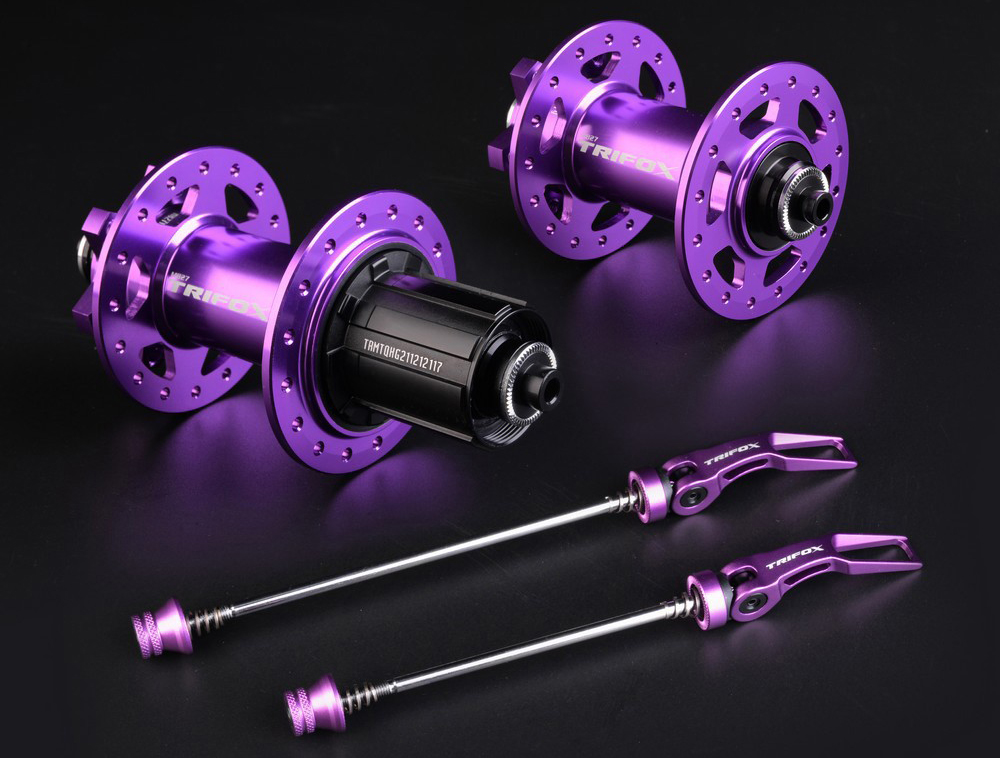
The Benefits of Choosing the Right Hub: Trifox Bike Hub M827
Choosing the right hub, like the Trifox Bike Hub M827, can offer several benefits:
- Improved Bike Performance: A well-made bike hub ensures smooth wheel rotation, reducing friction and enhancing your bike's overall performance.
- Durability: Quality hubs like the Trifox Bike Hub M827 are built to last, ensuring you can tackle even the toughest terrains with confidence.
- Better Control and Stability: The right hub improves wheel strength and stability, giving you better control over your bike.
In conclusion, choosing the right 32H bike hub involves considering your riding style, the hub's compatibility, material, construction, and bearing type. The Trifox Bike Hub M827 excels in all these areas, making it a fantastic choice for enhancing your cycling experience.
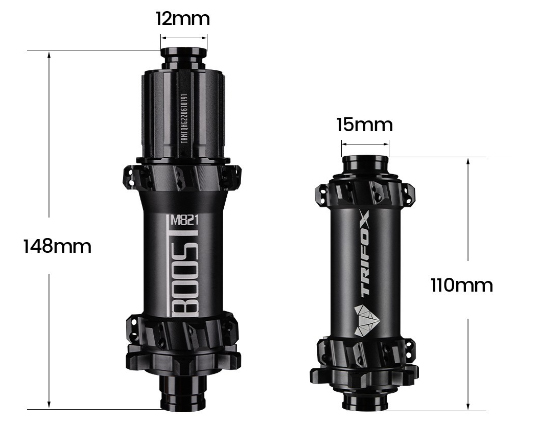
Mountain biking is an exhilarating sport that demands not only physical strength but also reliable equipment. One such piece of equipment that can significantly enhance your biking experience is a bike hub boost, such as the Trifox Bike Hub M821 Boost for MTB.
Installing the Trifox Bike Hub M821 Boost for MTB
Before you begin, it's important to note that installing a bike hub boost requires precision and some technical knowledge. If you're unsure, consider seeking assistance from a professional.
1. Remove the Old Bike Hub
Start with removing your wheel from the bike frame. Once done, use a cone wrench to remove the nuts holding the old hub in place. Carefully slide out the old hub, making sure not to lose any small parts like bearings or spacers.
2. Install the Trifox Bike Hub M821 Boost
Slide the Trifox Bike Hub M821 Boost onto the axle. Make sure the hub is centered on the axle before securing it with the provided nuts. Use a torque wrench to ensure the nuts are tightened correctly.
3. Reinstall the Wheel
Once the new hub is securely installed, reattach the wheel to your bike frame. Ensure it's properly aligned and that the quick-release or thru-axle is tightened securely.
The Benefits of a Bike Hub Boost
Installing a bike hub boost, like the Trifox Bike Hub M821 Boost, offers several benefits:
1. Improved Wheel Stiffness
A bike hub boost increases the distance between the flanges on the hub, which results in a wider bracing angle for the spokes. This improves wheel stiffness, offering better handling and control over rough terrains.
2. Enhanced Frame Design
The wider hub spacing allows for wider frame and fork designs, which can accommodate larger tires and offer improved suspension designs. This results in better traction and a smoother ride on rough trails.
3. Better Wheel Durability
The increased wheel stiffness from a bike hub boost also improves the wheel's durability. The wheels are less likely to go out of true or get damaged when riding over rough terrain.
4. Increased Bike Performance
Overall, installing a bike hub boost can significantly enhance your biking performance. It offers better control, stability, and durability, making your rides more enjoyable and efficient.
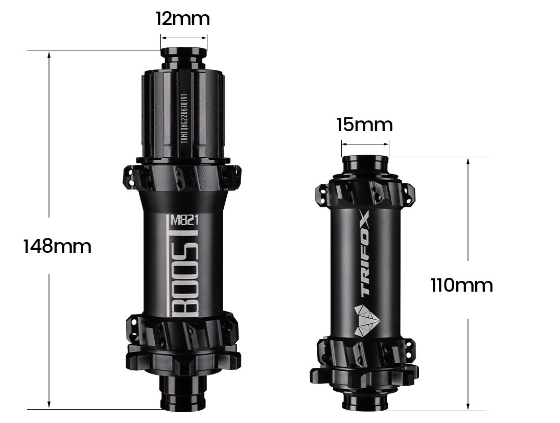
Installing a bike hub boost may require some effort, but the benefits it offers make it a worthwhile upgrade. The Trifox Bike Hub M821 Boost for MTB is a fantastic option that promises to enhance your mountain biking experience.

Competitive mountain biking is a sport that demands physical strength, technical skills, and mental resilience. With the right training regimen and equipment, you can prepare yourself to face the challenges of the trail head-on.
Preparing Your Equipment: The Trifox Pioneer Full Suspension Bike
Before you begin your training, it's crucial to have the right equipment. The Trifox Pioneer full suspension bike is an excellent choice for competitive mountain biking. It features a lightweight carbon fiber frame, full suspension for improved control on rough terrain, and a high-quality drivetrain for smooth, reliable shifting.
Ensure your bike is properly set up before you start training. Adjust the saddle height for optimal pedaling efficiency, and fine-tune the suspension settings to match your weight and riding style. Regular maintenance, including cleaning and lubricating the drivetrain, checking tire pressure, and inspecting the brake pads, is also essential to keep your bike in top condition.
Physical Training for Competitive Mountain Bike
1. Endurance Training
Endurance is crucial for competitive mountain biking. Incorporate long, steady rides into your training routine to improve your cardiovascular fitness. Start with shorter distances and gradually increase your mileage as your fitness improves.
2. Strength Training
Mountain biking requires strength, particularly in the core and upper body. Include strength training exercises in your routine, focusing on the abs, back, arms, and shoulders. Squats and lunges can help strengthen your legs for more powerful pedaling.
3. High-Intensity Interval Training
HIIT involves short bursts of intense exercise followed by recovery periods. This type of training can help improve your power and speed, both of which are important for competitive mountain biking.
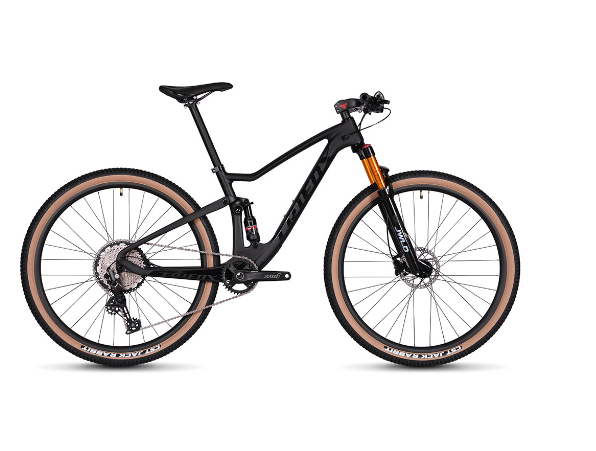
Technical Skills Training
1. Bike Handling Skills
Practice maneuvers like cornering, climbing, descending, and navigating obstacles. Mastering these skills can help you maintain control of your bike in challenging trail conditions.
2. Gear Shifting
Effective gear shifting can help maintain your momentum on varying terrains. Practice shifting gears smoothly during your training rides.
3. Brake Control
Good braking technique is crucial for safe and efficient riding. Practice using both brakes together for balanced stopping power, and learn to modulate your braking to avoid skidding.
Mental Preparation
Competitive mountain biking also requires mental toughness. Visualization techniques can help you prepare for the challenges of a race. Imagine yourself successfully navigating the course and overcoming obstacles. This can boost your confidence and improve your performance on race day.
Training and preparing for competitive mountain biking is a demanding but rewarding process. With the right equipment like the Trifox Pioneer full suspension bike, a comprehensive training regimen, and a strong mindset, you can take your performance to new heights.
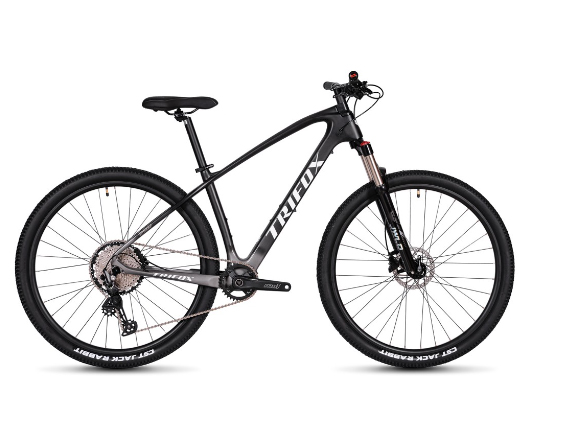
Mountain biking is an exhilarating sport, a perfect blend of thrill and challenge. To perform at your best, you need a reliable bike that is tailored to your preferences. The Trifox M2 hardtail mountain bike is a versatile choice, offering an excellent balance of speed, control, and agility.
Assembling Your M2 Hardtail MTB Complete Bike
1. Unboxing and Preparation
Start by carefully unboxing your Trifox M2. Ensure all components are present, including the frame, wheels, handlebars, seat post, pedals, and other accessories.
2. Install the Fork
Slide the fork into the head tube of the frame. Make sure the fork is facing the right direction: the brake mount should be at the front. Tighten the top cap and stem bolts with an Allen key.
3. Attach the Handlebars
Place the handlebars onto the stem, ensuring they are centered. Attach using the four bolts on the faceplate of the stem, tightening them evenly.
4. Install the Seat Post and Saddle
Apply a little grease to the seat post before sliding it into the frame to prevent it from seizing. Adjust to your preferred height and tighten securely. Attach the saddle and adjust its angle for comfort.
5. Install the Wheels
Slide the front wheel into the forks and tighten the quick-release lever or thru-axle. Repeat with the rear wheel, making sure the gears are on the right side of the bike.
6. Attach the Pedals
Install the pedals by screwing them into the crank arms. Note that the pedals are side-specific and have different thread directions.
Fine-Tuning Your M2 Hardtail MTB Complete Bike
1. Adjust the Brake Levers
The brake levers should be positioned so you can reach them easily with your index fingers. You can also adjust the distance of the lever from the handlebar for comfort.
2. Set Up the Gears
Shift through all the gears to ensure they are working smoothly. If the gears are skipping or not changing properly, you may need to adjust the cable tension using the barrel adjusters on the derailleur.
3. Check the Tire Pressure
Use a bike pump to inflate the tires to the recommended pressure (this can usually be found on the tire sidewall).
4. Test Ride and Make Final Adjustments
Take a short ride to check the bike's overall performance. Pay attention to the brake responsiveness, gear shifting, and overall comfort. Make any necessary adjustments to ensure a smooth ride.
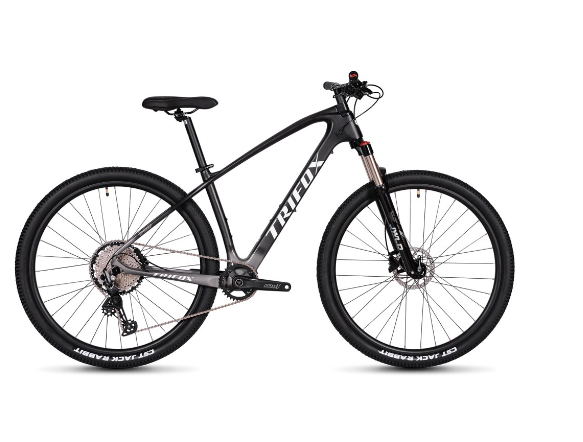
Assembling and fine-tuning your Trifox M2 hardtail mountain bike allows you to understand your bike better and ensures it is set up to suit your riding style. Remember, regular maintenance is key to keeping your bike in top shape for your mountain biking adventures.
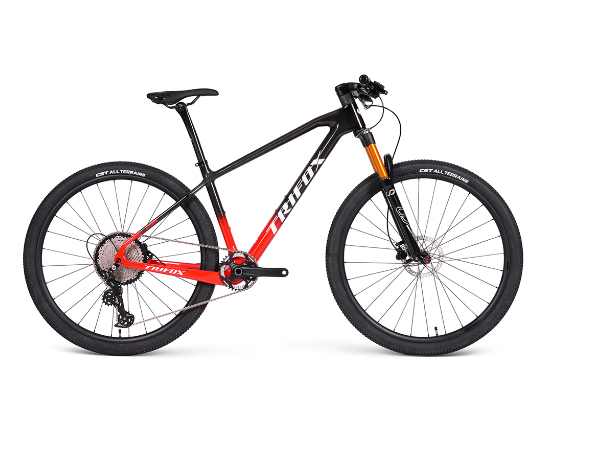
Managing and installing cables in a full internal mountain bike can be a daunting task, especially for beginners. However, with the right tips and patience, you can easily do it yourself.
Installing Cables in a Full Internal Mountain Bike
1. Prepare Your Tools
You'll need a set of Allen keys, cable cutters, a 4th hand tool, and ferrules and end caps for the cables. Also, ensure you have the correct type and length of cable for your bike.
2. Remove Old Cables
Start by removing the old cables. Do this by cutting off the end cap from the cable, then pulling it out from the derailleur end. If you have full-length housing, it's best not to pull the old housing out when replacing the cable.
3. Insert New Cables
Once the old cables are out, you can start inserting the new ones. Start at the shifter and push the cable through until it comes out at the other end. For bikes with cable stops on the frame, you may need to run interrupted housing for the parts inside the frame[.
4. Adjust the Derailleurs
After inserting the new cables, you'll need to adjust the derailleurs to ensure smooth gear shifting. This process involves setting the high and low limits on the derailleur and adjusting the cable tension.
Managing Cables in a Full Internal Mountain Bike
1. Regular Inspection
Regularly inspect your cables for any signs of wear or damage. Pay special attention to areas where the cable bends, as these are more susceptible to wear.
2. Keep Cables Clean
Dirt and grime can cause your cables to degrade faster. Clean your cables regularly with a soft cloth and mild soap.
3. Proper Cable Routing
Proper cable routing is essential for optimal performance. By routing everything to the inside, you can prevent your hydraulic hoses and other potential twig grabbers from getting yanked, pulled, or twisted.
4. Professional Servicing
Even with regular maintenance, it's advisable to get your bike professionally serviced at least once a year. A professional can spot issues that you may miss and ensure that your bike is in top condition.
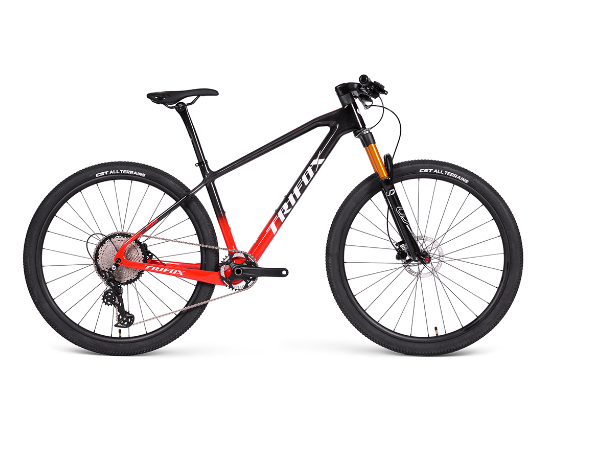
Installing and managing cables in a full internal mountain bike can seem intimidating, but with patience and practice, you can easily do it yourself. Remember, the key to a smooth ride is well-installed and well-maintained cables. Happy biking!
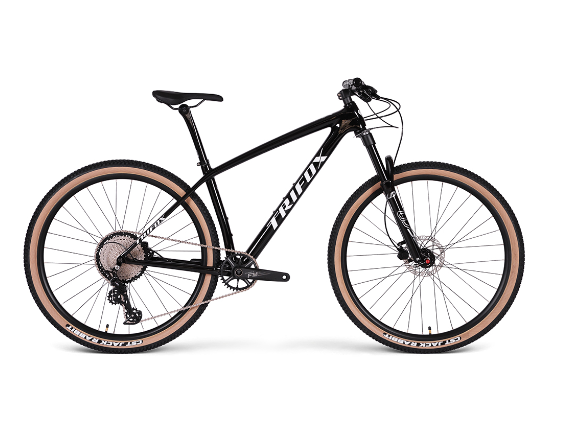
Mountain biking is a thrilling and dynamic sport. It's not just about the ride; it's also about the bike itself. One of the most significant factors to consider when mountain biking is the type of bike you're riding. An ultra-light mountain bike can significantly enhance your performance, but choosing the right one and maintaining it can be a daunting task.
Choosing an Ultra Light Mountain Bike
1. Frame Material
The frame material plays a crucial role in the weight of the bike. Carbon fiber is the most common material used in ultra-light mountain bikes due to its strength and lightweight properties. However, they can be expensive. Aluminum is a cheaper alternative, but it may add a little weight.
2. Bike Size
Choosing the correct bike size is crucial for comfort and control. Most manufacturers provide a size guide based on your height. Make sure you check this before purchasing.
3. Suspension
Depending on the type of terrain you'll be riding on, you'll need to choose between a hardtail (front suspension only) or a full-suspension (front and rear suspension) bike. Hardtails are lighter and more suitable for smooth trails, while full-suspension bikes are better for rough terrains.
4. Wheel Size
There are three main wheel sizes: 26”, 27.5” (or 650b), and 29”. The 29” wheels are the heaviest but offer better momentum and roll over obstacles easier. The 27.5” offer a balance between the two.
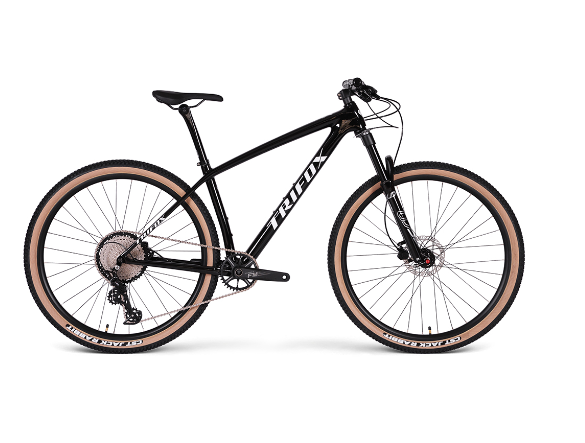
Maintaining an Ultra Light Mountain Bike
1. Regular Cleaning
Regular cleaning is essential to keep your bike in the best condition. Dirt and grime can cause wear and tear on your bike's components. Use a soft brush and mild soap to clean the frame and components. Make sure to dry it thoroughly to prevent rust.
2. Lubricate Moving Parts
Lubrication reduces friction in the moving parts of your bike, leading to smoother operation and longer lifespan for these components. Use a bicycle-specific lubricant for the chain, derailleurs, and other moving parts.
3. Regular Inspection
Inspect your bike regularly for any signs of damage or wear. Pay special attention to the brake system, tires, and gears. If you find any problems, address them immediately to prevent further damage.
4. Professional Servicing
Even with regular maintenance, it's advisable to get your bike professionally serviced at least once a year. A professional can spot issues that you may miss and ensure that your bike is in top condition.
Choosing and maintaining an ultra-light mountain bike might seem like a lot of work, but the benefits are worth it. With the right bike and proper care, you can enjoy a smooth, fast ride and tackle more challenging trails. Remember, the key to optimal performance is a well-chosen and well-maintained bike. Happy biking!

Choosing the ideal road bike for your biking activities is far from easy. With a plethora of bike reviews and recommendations available on the internet, finding the perfect road companion has become increasingly challenging. However, paying close attention to specific characteristics such as frame material, weight, drivetrain, and wheel selection can help you decipher bike reviews and choose the best road bike that suits your needs.
1. Frame Material:
The frame material is perhaps the most important factor to consider when selecting a road bike. Most bike manufacturers use lightweight material such as carbon fiber, aluminum, titanium, and steel to reduce the overall weight of the bike. Carbon fiber is the most popular material used in making high-end road bikes because of its lightweight, durable, and stiff qualities. Aluminum and titanium are also great options for mid-range bikes as they are strong, light, and affordable. Steel, on the other hand, is an excellent choice for people looking for a comfortable ride as it absorbs shocks better than the other materials.
2. Weight:
The weight of the road bike is another essential factor to consider when reading bike reviews. A lightweight bike means better acceleration, handling, and easier uphill climbing, making it a perfect choice for racing and long rides. However, the flip side is that lightweight bikes are costlier than heavier ones. A heavier bike, on the other hand, is a suitable option for beginners and those who prefer more stability on the road.
3. Drivetrain:
The drivetrain system of the bike is the component responsible for transferring the power from the pedals to the wheels. The number of gears a bike has, the type of shifters it features, and the range of gears it can achieve are all critical factors to look at when reading bike reviews. Most modern road bikes feature either a 2x or 3x drivetrain system with the 2x being the popular choice. However, each option has its advantages depending on your biking style and daily riding activities.
4. Wheel Selection:
Wheel selection is another critical factor to consider when decoding bike reviews. Wheels play a crucial role in determining the handling, speed, and comfort of the bike. Most high-end road bikes feature lightweight and aerodynamic carbon fiber wheels that enhance rolling resistance and speed. However, alloy wheels are a great option for people looking for affordable yet functional wheels.
5. Bike Fit:
Proper bike fit is essential to ensure that your riding experience is as comfortable and enjoyable as possible. When reading bike reviews, look for features such as saddle height, bike frame size, saddle angle, and handlebar position to determine whether the bike is an excellent fit for you. Additionally, make sure to test ride the bike personally to ensure that it feels comfortable and stable during riding.
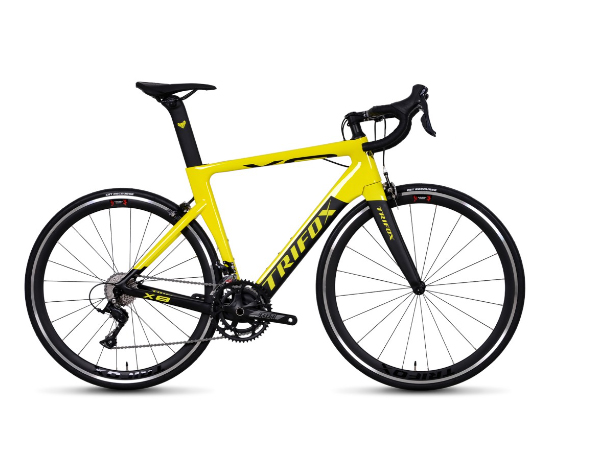
Choosing a road bike that meets your biking needs can be challenging, but paying close attention to essential factors such as frame material, weight, drivetrain, wheel selection, and bike fit can help you decipher bike reviews and select the perfect bike for you.
Remember to also consider your budget and personal preferences when selecting your bike as they'll play a significant role in your biking experience. With this guide, we hope that you can choose the perfect road companion that'll help you enjoy riding for years to come. Happy biking!

















































